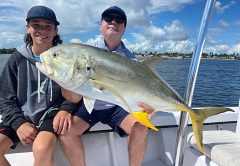Summer is here and no matter how hard we try, our livewells are becoming harder to maintain. Other than adding ice to lower the temperature, increasing the oxygen levels within the tank can go a long way in keeping our catch alive.
Many of the solutions to everyday problems come from everyday life. What I’m talking about is a simple chemical that’s really a miracle in and of itself. If it’s 100% concentrated it’s rocket fuel, but we know it as a common antiseptic that’s totally safe. You can pour it on cuts. You can even gargle it. It’s in mouthwash. It’s everywhere. I’m telling you, this stuff is amazing. It’s called hydrogen peroxide.
The simple formula for hydrogen peroxide is very similar to water, which is H2O. It is actually H2O2. That means that there’s one extra oxygen in every molecule of this stuff, and that’s exactly what fish need to survive. One of the worst things about hydrogen peroxide is that it gets a bad rap. By that I mean that because in concentration it’s very caustic or burns because oxygen burns then many people think that to put it in the water with fish would actually cause burning of the gills and the eyes.
You have to realize that we’re using very safe concentrations, and that’s what we’re recommending here. The real peroxide that you get in a bottle is only 3%. When you take 3/100 of a part oxygen and you put it in anything, it’s not nearly as strong, and then we’re pouring it in water at a ratio of about 300-400 to 1. So now you’re reducing that 3% by another 300, and that makes it totally safe.
The amazing thing is, and it’s really amazing, there is so much oxygen in this peroxide that it literally saturates the water. Water has the wonderful ability to dissolve almost anything around it into itself. That’s why they call it the universal solvent. It dissolves the peroxide, but water can only absorb that which it can saturate. It’s sort of like pouring water on sponge.
You pour water on the sponge. Once the sponge gets saturated, then it will just flow off of it and fill a bowl of water, but if you squeeze the water out of a sponge, as a fish squeezes the oxygen out of water with his gills, then more water will soak into the sponge. That’s exactly what you do. You put a big reserve of oxygen in the water with hydrogen peroxide.
Pour about one ounce of hydrogen peroxide in three gallons of water. The average live well may be 15 gallons, so pour five ounces of that, and it’ll make a reserve of oxygen in your water that will keep your fish alive and well. Even if your aerator stops, no matter what, fish need oxygen to survive and hydrogen peroxide is the solution.
[easy-social-share]






